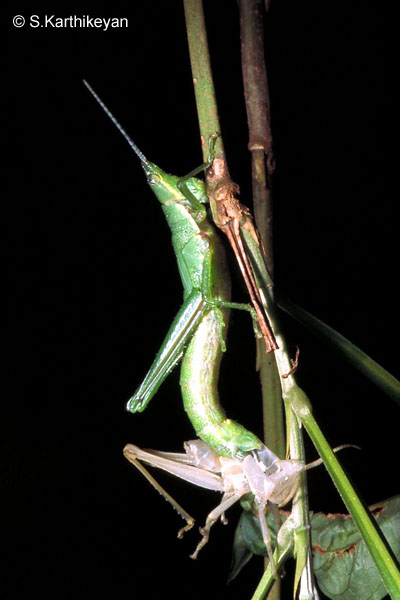Ask a question, “Do you look like your parents?” to insects. The young ones of grasshoppers, bugs and cockroaches will answer, “yes”, while butterflies and beetles will say “no”.
All these insects start life as an egg. The young ones of butterflies and beetles look very unlike their parents when they are born. They go through an intermediate dormant stage (pupa) before they eventually transform into adults. While the grasshoppers, bugs and cockroaches look like miniatures of their parents when they are born and have to moult many times as they grow into adults.
Moulting is a process where the insect changes into new “clothes” by shedding their old skin that has grown tight. Most insects need to change their “clothes” at some point of time in their life as they grow – just like we need to buy a new wardrobe, as we grow bigger.
Insects have an exoskeleton (i.e. they have their skeleton on the outside). This can become a problem to a growing insect, unless the exoskeleton is discarded periodically making room for growth. Insects achieve this by moulting from time to time. They shed their old small exoskeleton so that they can grow a new one which is bigger. The exoskeleton can also expand when it is new and still soft. It gradually hardens and no growth is possible until it moults again.

The process of moulting is complicated and can take several hours. During this time, the insect is very vulnerable as it cannot escape from predators and therefore it tries to hide during the moulting process.
During the time spent out in the wilderness, I have had several opportunities to see the moult (shed skin) of insects like grasshoppers and praying mantids clinging on to plants like ghosts of their owners. But, only recently (during a trip to Goa), was I lucky to witness a grasshopper in the process of shedding its skin and was even luckier to have a camera on me to document the event!